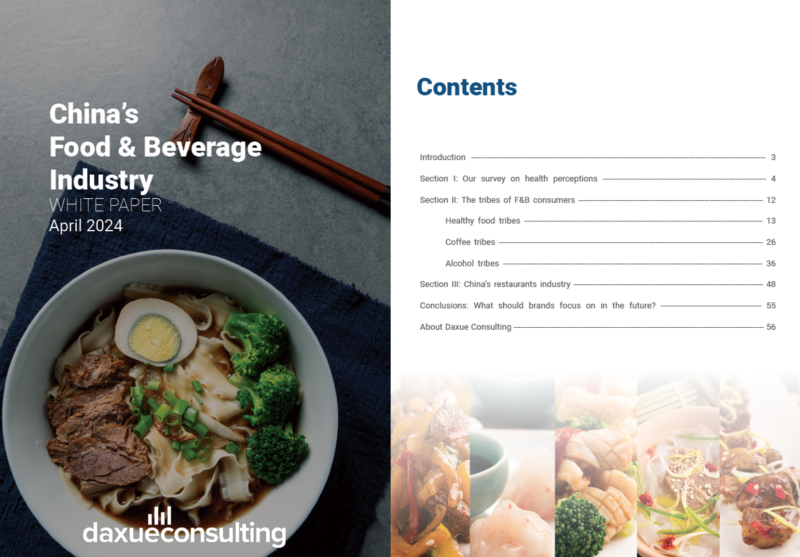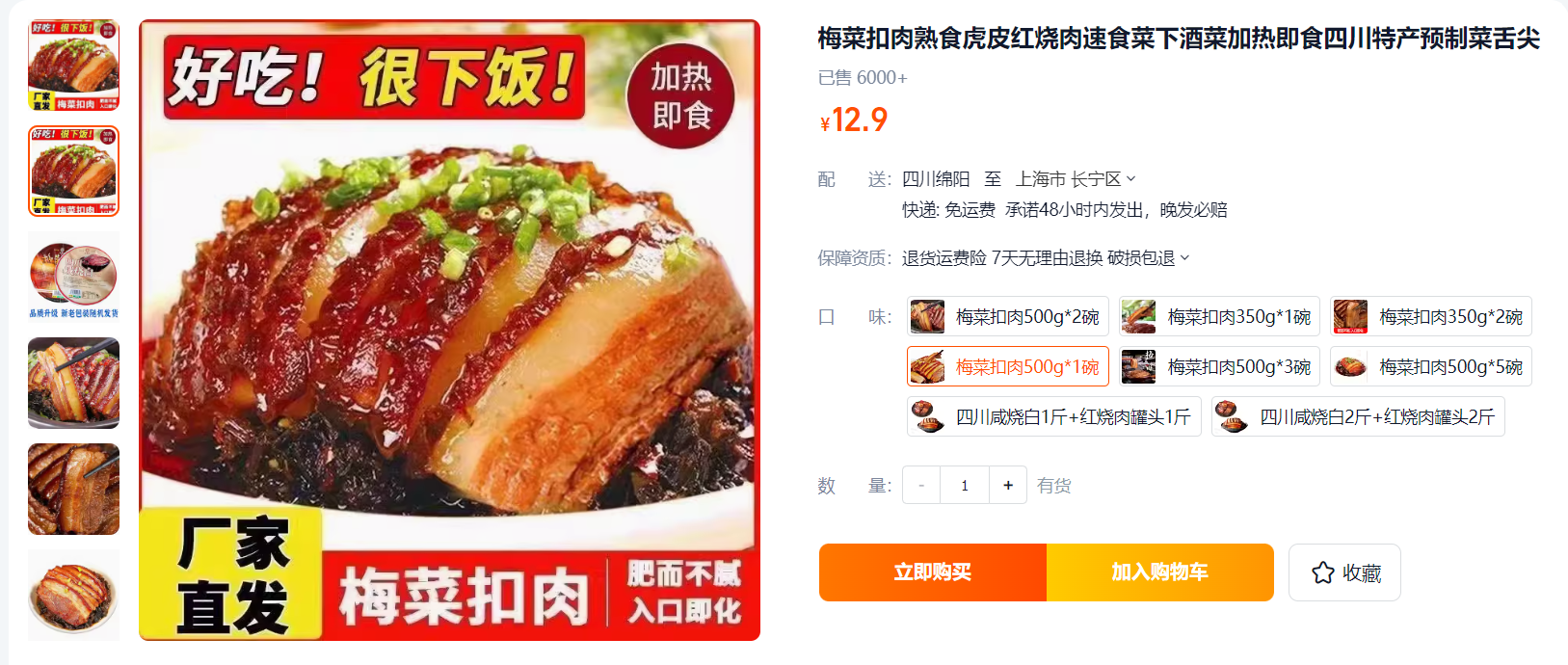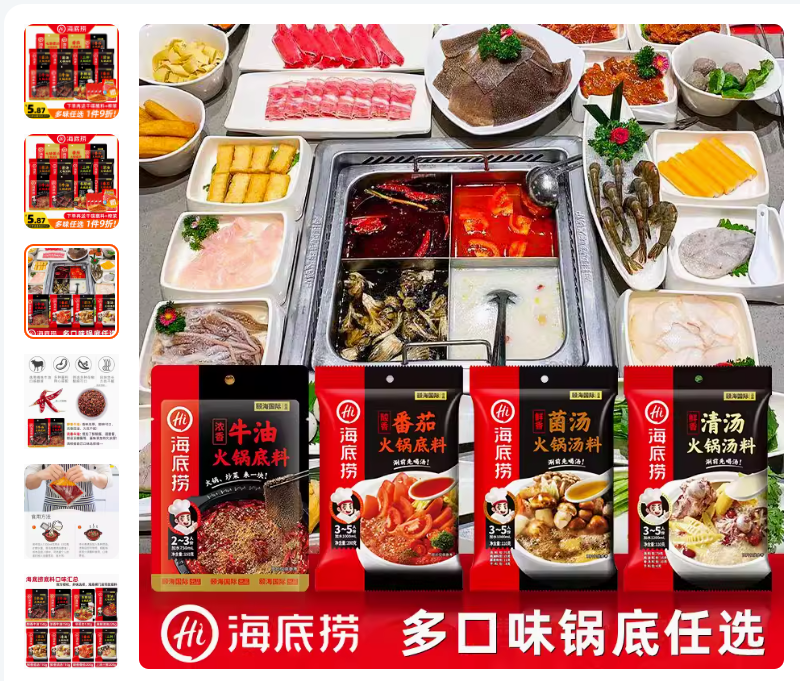The surge of meal kits in China finds its roots in the upheaval brought about by the pandemic, which reshaped consumer habits and preferences. As restrictions made it inconvenient for people to dine out, a burgeoning trend of purchasing pre-cooked meal kits emerged, offering a convenient and safer alternative. Ready-to-eat meal kits swiftly gained popularity across China, fueled by the dual desires for convenience and health consciousness amid busy schedules.
According to NielsenIQ, in 2023, out of 1,100 respondents, 36% of Chinese consumers are inclined to increase spending on groceries and household goods, with fresh food, healthy nutrition, and fresh meat ranking among their top priorities. Additionally, 30% of respondents expressed a preference for staying at home more and going out less, indicating a fundamental shift in lifestyle choices.
In 2021, the pre-prepared food market in China soared to RMB 346 billion and is expected to surpass RMB 1 trillion by 2026. The driving force behind the consumption of ready-to-eat meals primarily stems from married women born in the 1980s and 1990s residing in first-tier cities, with statistics revealing a gender and marital status skew of 63.7% women and 36.3% men, and 76% married versus 24% unmarried.
Download our China F&B White Paper

Instant industry growth for the instant food industry
Despite emerging relatively late, around 2014, compared to leading countries like the United States and Japan, pre-cooked meal kits swiftly gained traction in China.
The pivotal moment for the industry came in 2020 with the onset of the pandemic and the implementation of city lockdown. This unprecedented period accelerated the penetration of pre-cooked meal kits into the consumer market, transitioning from a business-to-business (B2B) to a business-to-consumer (B2C) model.
E-commerce giants like JD’s online supermarket played a significant role in driving the growth of meal kits in China. With over 2,000 products from over 400 brands, JD’s platform has become a go-to destination for consumers seeking convenient meal solutions. JD reported a remarkable sales growth of over 120% for ready-to-eat meals between 2021 and 2023, highlighting the sustained demand and popularity of pre-cooked meal options among Chinese consumers.
Types of meal kits in China
Meal kits come in four main types, catering to diverse culinary preferences and convenience levels. These range from ready-to-eat pre-made options that require no heating (即食), to instant dishes that need boiling or heating (即热), ready-to-cook pre-made dishes with simple cooking steps like sautéing (即烹), and ready-to-cook pre-prepared dishes requiring more extensive cooking processes (即配).
The variety of meal kits ensures there’s something for everyone, encompassing a wide array of dishes: Chinese staple foods, pre-prepared meat dishes, packaged hotpot ingredients, western baked goods, salads, new ready-to-cook entrees, and self-heating foods.
Pork is the staple of meal kits in China
Pork takes center stage among meal kits in China, reflecting the nation’s status as the world’s largest pork producer and consumer. Pork-based pre-made dishes are popular in various contexts, from everyday meals to special holiday gift boxes like Chinese New Year’s dinner sets. In particular, braised pork with preserved vegetables (梅菜扣肉) is a top seller, alongside crispy pork and braised pork feet and ears.
The rise of social media platforms like Douyin has further fueled demand for pre-made dishes, with sales surging by an impressive 1,503% year-on-year in the first few months of 2022.

The key to the success of the meal kit market in China: well-established delivery service
In the bustling landscape of China’s ready-to-eat meal industry, several key players have emerged as frontrunners, shaping the market’s trajectory with their innovative offerings and widespread appeal. Sanquan (三全) leads the pack, a household name synonymous with quality and convenience. Their diverse range of meal kits caters to a wide spectrum of tastes and preferences, garnering a significant share of the market. Following closely is Jukoufu (聚口福), renowned for its commitment to flavor and freshness, capturing the hearts of consumers across the nation. Xinmeixiang (新美香) has also made significant strides in the industry, known for its emphasis on premium ingredients and culinary excellence. Haidilao (海底捞), a familiar name in China’s culinary scene, has leveraged its reputation for exceptional service to carve out a niche in the ready-to-eat meal market, offering a unique blend of convenience and gourmet dining experience.

The success of meal kits in China is likely due to a blend of convenience, quality, culinary exploration, and cost-effectiveness, along with their alignment with young people’s lifestyles and the increasing availability of health-conscious options, particularly as local consumers become more health-aware and look to manage their spending.
The evolution of meal kits in China: from B2B to B2C in a health-conscious era
- The COVID-19 pandemic significantly reshaped consumer habits, leading to a rise in the popularity of pre-cooked meal kits in China as a safer and more convenient alternative to dining out.
- A NielsenIQ survey from 2023 highlights that 36% of Chinese consumers plan to increase spending on groceries, prioritizing fresh food, healthy nutrition, and fresh meat. Additionally, 30% prefer staying home more, reflecting a shift in lifestyle choices.
- China’s pre-prepared food market grew to RMB 346 billion in 2021 and is expected to exceed RMB 1 trillion by 2026. The primary consumers are married women born in the 1980s and 1990s in first-tier cities, with a significant gender and marital status skew.
- Meal kits in China come in four main types, ranging from ready-to-eat (即食) to ready-to-cook (即配), catering to diverse culinary preferences and convenience needs. The variety includes Chinese staples, pre-prepared meat dishes, hotpot ingredients, baked goods, salads, and self-heating foods.
- Pork-based dishes, especially braised pork with preserved vegetables (梅菜扣肉), are very popular. E-commerce giants like JD have driven the growth of meal kits, with JD reporting over 120% sales growth for ready-to-eat meals from 2021 to 2023. Social media platforms like Douyin also significantly boost demand, with notable sales increases.
We offer consulting services for China’s F&B industry
China’s restaurant market is a dynamic sector, influenced by shifting consumer preferences, technological advancements, and evolving dining habits. Daxue Consulting offers expert market research in China, providing in-depth insights into the trends and challenges shaping the restaurant industry.
Our comprehensive consumer understanding helps businesses refine their offerings and craft effective marketing strategies to resonate with local diners. Through our consulting services, we guide you to leverage emerging opportunities and navigate the competitive landscape. Reach out to us to discover how our expertise can drive your restaurant business’s success in China.






